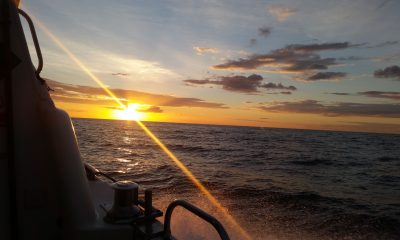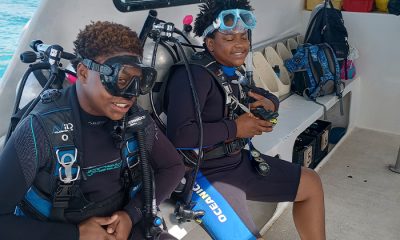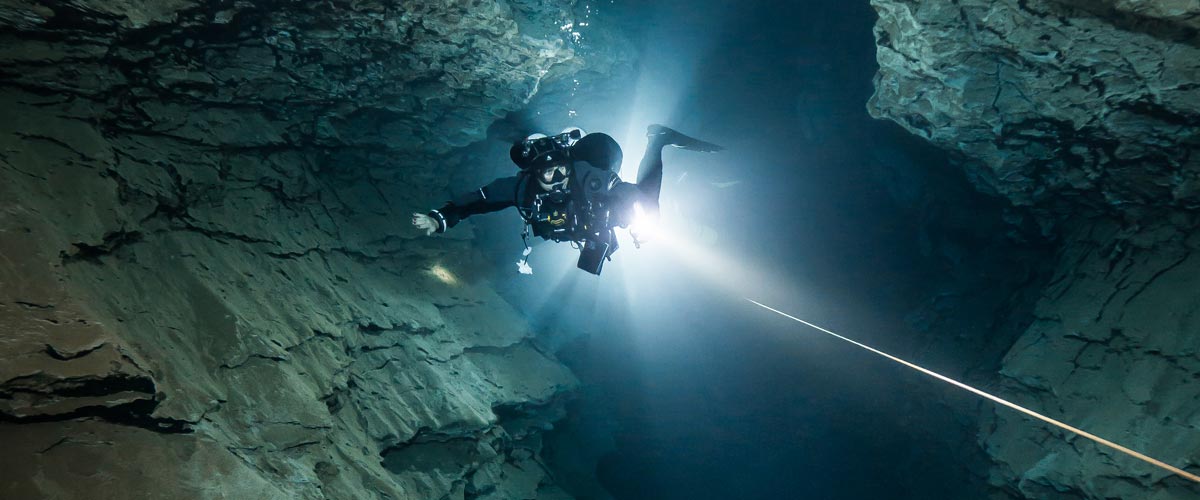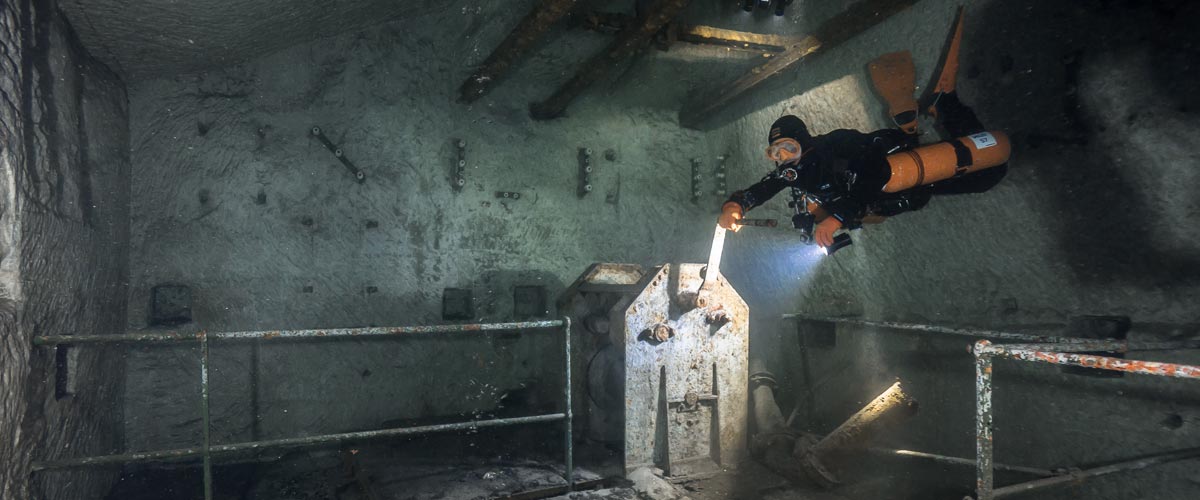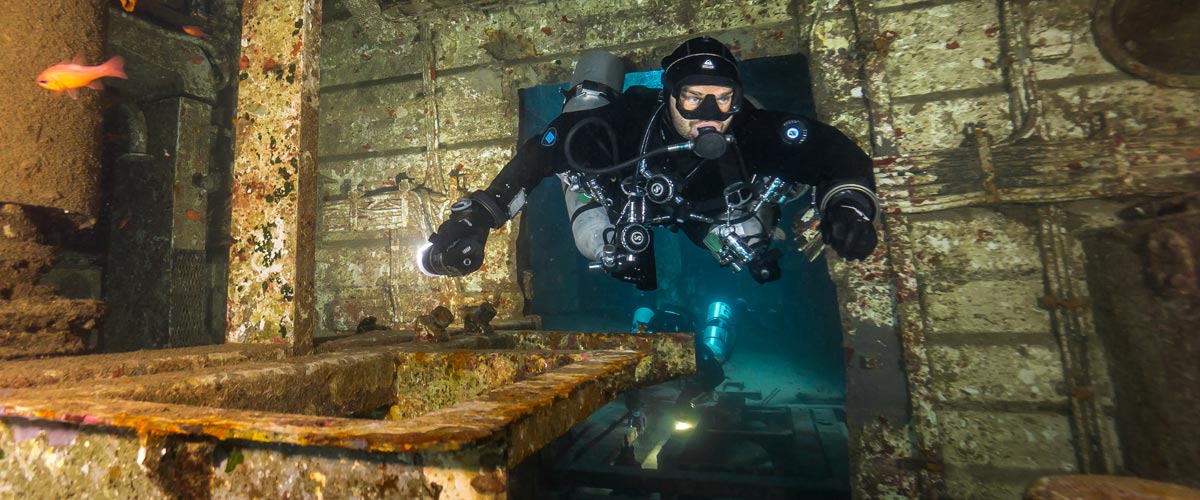Dive Training Blogs
Sidemount: Not just for Technical Divers
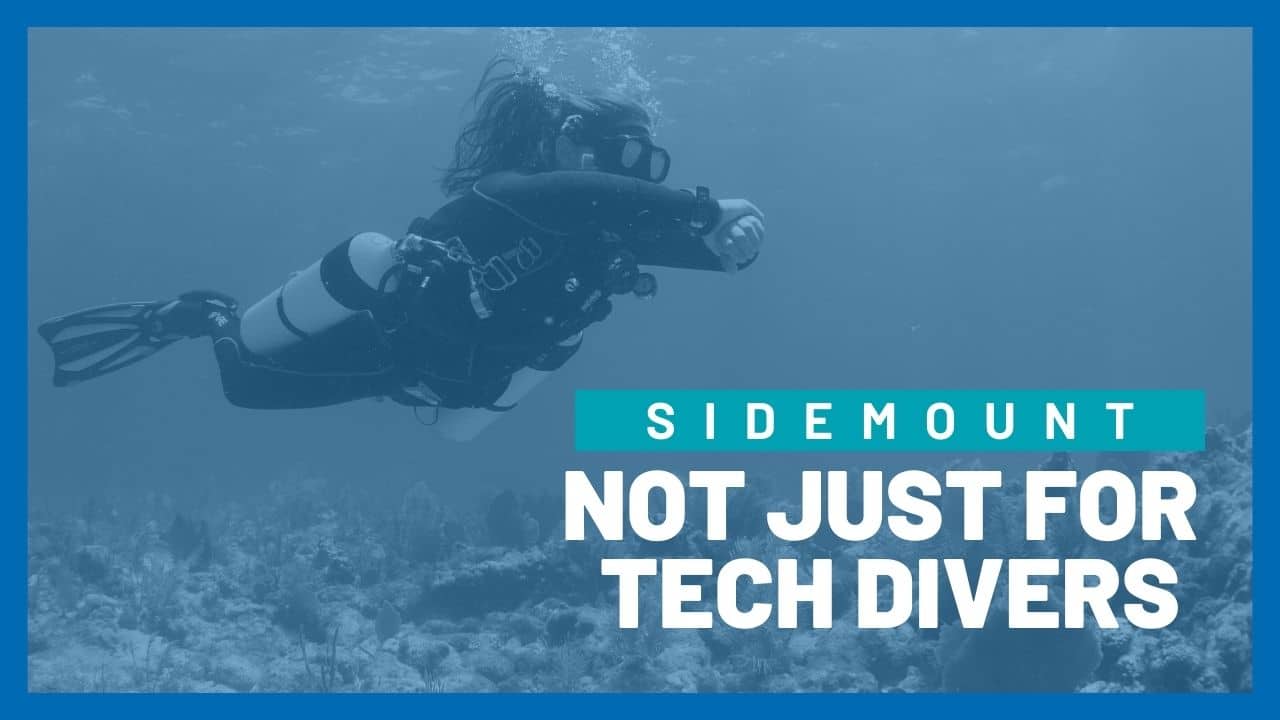
By Heather McCloskey
In the 1960’s, dry cave explorers in the UK became the first “sidemount divers” when they began clipping scuba cylinders to their caving harnesses as a means to cross sumps, or water-filled cave passages. Over the past 50 years, countless divers and equipment manufacturers have developed and refined sidemount diving and configurations through trial and error.
Today we see many technical divers in sidemount configuration and it remains especially popular with cave divers. There are clearly countless benefits of sidemount for technical diving, but did you know many of them cross over to recreational diving as well? Yep, that’s right: sidemount is not just for technical divers. In fact, I believe that everyone could benefit greatly from a technical sidemount course, even if they do not have an interest in technical diving.
Here’s why everyone should try sidemount diving:
STRENGTHEN DIVING FUNDAMENTALS & KNOWLEDGE
I think it is important to constantly learn new things. If you’re looking for a course with the potential to truly challenge you, reframe the way you think about diving, and improve your fundamental skills tenfold, look no further than a technical sidemount course.
In addition to teaching you how to safely dive in a new configuration, a technical sidemount course is like boot camp for your diving fundamentals: buoyancy, trim, and propulsion.
Even if you have good buoyancy control going into the course, a good instructor will push you to fine tune it even further. This will force you to extend your awareness and control of where you are in the water at all times, even when being distracted by problems.
You’ll work on propulsion techniques and likely focus more on how you’re kicking than you ever have before. Your instructor will help you perfect your frog kicks and helicopter turns, show you how to backfin effectively, and teach you special techniques for silty areas. After your sidemount course, you’ll know how to move through the water more gracefully and efficiently than you thought possible.
Furthermore, you’ll think about trim more than ever before and you’ll start to see how seemingly small things like the weight of your regulators and the buoyancy profile of your fins have huge impacts on a diver’s natural trim and you’ll learn how to effectively compensate for these things.
COMFORT & STREAMLINING
In sidemount, cylinders are mounted at your sides under your arms rather than on your back, giving you a much more streamlined profile. Even with two cylinders, propelling yourself through the water and maintaining proper trim feels much easier in sidemount than in single tank backmount.
If you have back or shoulder problems, you’ll likely find sidemount more comfortable in general because it allows more flexibility in those areas and the bulk of the weight is not on your spine.
During a proper sidemount course, you and your instructor will spend a lot of time adjusting your sidemount system to fit and function just right. You’ll also spend time trying to get properly trimmed and adjusting trim weight placement as needed. This part of the process may feel frustrating to some, but as soon as your system, weights, and trim are all right where they need to be you will realize it was well worth the trouble. When done properly, sidemount is an incredibly comfortable configuration to dive in.
REDUNDANCY & LESS RELIANCE ON BUDDY
One of the biggest benefits of sidemount is it offers true redundancy in case of a gas or regulator failure. When diving with two tanks in sidemount configuration you have two completely independent cylinders, first stages, and second stages. If one of these points fails, you have a backup.
In a proper sidemount course with a qualified instructor you will learn how to independently solve various equipment problems that could come up while diving. This training and configuration makes you more safe, more self-sufficient and less reliant on a buddy. Self-sufficiency is especially beneficial if you travel without a regular dive buddy and find yourself buddied up with strangers often. I’ll address more benefits of self-sufficiency, specifically solo-diver training, in a future post.
MORE GAS = LONGER DIVES
If you’re an air hog, or simply enjoy making long dives, sidemount configuration is a great way to carry more gas with you while staying streamlined. While diving twinset would be another way to have more gas, you may not be able to find twinset tanks at every single diving destination you visit. Another benefit of sidemount is that you do not need to hunt down special tanks to dive in sidemount configuration.
SIDEMOUNT TRAINING PREPARES YOU FOR THE FUTURE
If you don’t have interest in tech diving right now, that’s perfectly fine. However, training and experience diving in sidemount configuration will help you gain confidence and leave you well-prepared for any technical training that you may want to do in the future. And it may be just the thing that convinces you to try technical diving after all. 😉
To find out more about International Training, visit www.tdisdi.com.
Blogs
Intro to Tech: What is it about?
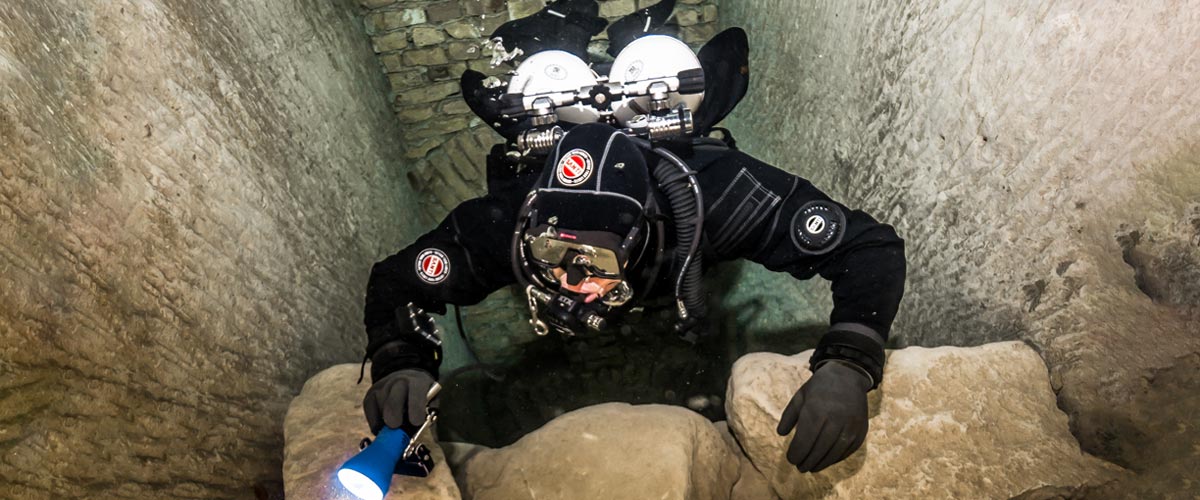
Article by José Pablo Mir
Pictures by Cezary Abramowski
The world of technical diving is exciting. It opens the door to new sites, depths, and bottom times. More importantly, it opens our minds to a new way of planning, facing, and experiencing dives, even those not purely technical.
Becoming a technical diver is a process, and like in other aspects of life, we should find the proper entry point that suits us best based on our knowledge and experience. The Introduction to Technical Diving course from TDI -the world’s largest and most recognized technical diving teaching organization- is the best option for divers who have yet to gain experience in the fundamental aspects of this new practice. The course’s content and its embrace of new techniques and technologies make it possible to acquire a solid foundation to learn and gain experience in this practice properly.
Becoming a technical diver is not something that happens overnight, whether deciding to become one or receiving a certification card stating we are now technical divers. It is a slow process extending farther away than any introductory course. It requires effort and dedication. But it will bring us satisfaction from day one -or two.
It is a matter of mentality
First, we must understand and accept that technical diving, involving greater depths, longer bottom times, exotic gases, virtual or real ceilings, and more, comes with higher levels of risk than the sport diving we have been practicing until now.
Although this discussion usually starts with a warning about risks, as I’ve done in the previous sentence, our practice is not a game of chance.
Technical diving is a rational activity that requires maturity and good judgment, and we will put everything into ensuring that each dive is a successful one -meaning we return from it safe and sound. With this understanding, we will strive to establish a mental attitude more aligned with our practice and its realities.
This new “technical diver” mindset we will develop will lead us to be more cautious in our executions, more analytical in our plans, more rational in our strategies, and more detailed in our procedures.
Experience will keep teaching us to know ourselves better, to keep our anxiety and other emotions under control, and to manage our impulses. Over time, our senses will sharpen, and we will be more attentive to the particulars of the situation we find ourselves in.
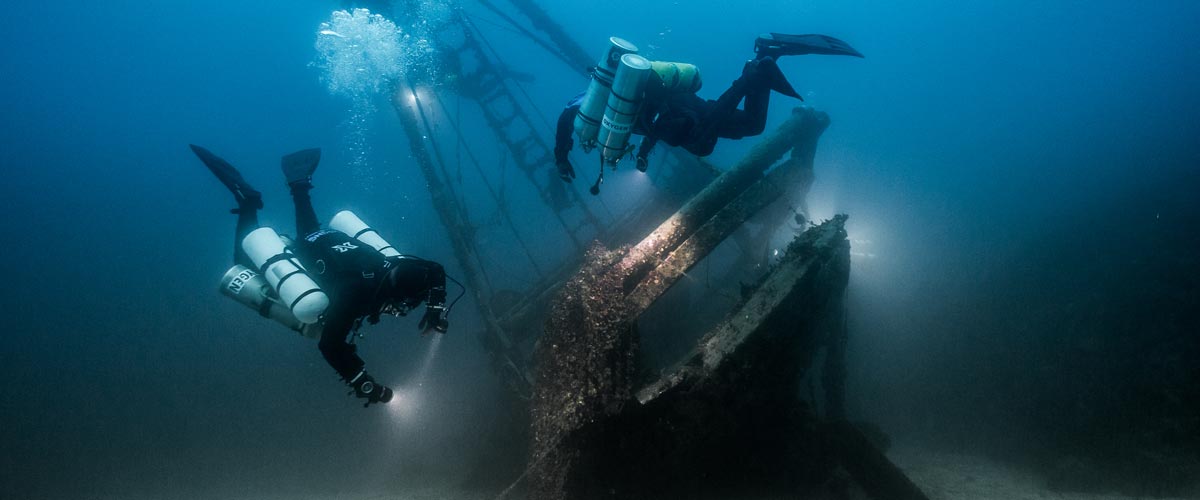
Strategies and procedures
Our strategies, those broad guiding lines tracing the path to follow, from how to approach planning to where, with what, and how we are willing to get there, will be more specific and more practical. Not because they magically become so, but because we will consciously and deliberately frame them that way.
We will establish clear, concise, and realistic procedures. Not only for the undesirable situations that may present themselves but also for those that are part of our dive objectives.
Even though, as technical divers, we often use equipment different from what we were previously accustomed to, it is essential to note that the gear does not make the diver. In a way, we could consider such equipment as the necessary tools to implement what our goal seeks to achieve, according to our strategies and procedures.
Technique plays an important role
We must put our greatest effort into learning and perfecting the different techniques we will be acquiring. Buoyancy, trim, propulsion, cylinder handling, deploying DSMBs and lift bags, valve drills, and more are essential skills we must begin to master to progress in our art. What we cannot do, when we need to do it, can harm us.
Our techniques must be effective and achieve the purpose for which they were devised. But they must also be efficient and require the least resources possible, including the time they take and the effort they demand. Effectiveness and efficiency will prevail over beauty and other considerations that may come to mind, although none of them should be mutually exclusive. A technique executed efficiently and effectively tends to have an inherent beauty.
Refining techniques is a lifelong mission. Some of them will be easy to master from the go; others, on the other hand, will be our life mission and will require many repetitions just to resemble the idea we have in mind of how they should be executed.
We must consider the environment
Our learning, the needs and musts of the practice we engage in, the experience we gradually gain, our strategies and procedures, and even our equipment and tools change with the environment.
Diving in the ocean, everything about us must be suitable for ocean dives. Conditions there rarely emulate those found in a pool, lake, or river. Variable winds and currents, greater depths, visibility conditions, other divers with uncertain skills around us, marine life, maritime traffic, distance from the coast, and many other factors add complexity and uncertainty.
It is never necessary to master the pool on the first day, but planning and aspiring to gradually cope with the ocean’s conditions is essential.
The cost of good training
We are aware that our resources are often scarce in relation to the possibilities of use we could give them if they were not. To a greater or lesser extent, we are part of the economic reality in which we are embedded.
Fortunately, the cost of good technical diver training is not an entry barrier. Comparing training and equipment costs, we see that the former are generally lower. Yes, lower cost for personalized service, essential to our future
performance and safety, than for a series of mass-produced products that are mere, albeit necessary, tools for an end.
The value of good training
The value of the training we received encompasses a range of characteristics, from emotional and methodological to technical and technological. TDI and its Introduction to Technical Diving course offer a deep and modern approach, with a teaching strategy that aims to create thinking divers, not merely obedient ones.
As technical divers, our knowledge is our primary tool. In this type of activity, what we don’t know can harm us.
Is this course optional?
Unfortunately, the fact that this Introduction to Technical Diving course is not a prerequisite for any subsequent training is an invitation to consider it optional. And we all know what usually happens to “optional” under budget constraints.
However, this course should be seen as optional only by those divers who are somehow familiar with the use of technical equipment, who have a mindset more in line with the requirements of this type of diving, who plan and execute the dives the proper “technical” way, who know their gas consumption rate, who are not intimidated by non-decompression tables, who feel comfortable using their dive computers, and know the techniques and have at least an acceptable level of buoyancy, positioning, and propulsion. Those can go straight to a more advanced training course, such as TDI’s Advanced Nitrox.
We must ask ourselves whether or not we are in that group.
Remember our goal: to have fun
Recreational diving is our passion. Jumping into the water carrying heavy equipment and having properly dotted our I’s and crossed our T’s have only one ultimate goal: fun. This is the activity we have chosen as a hobby. We must enjoy it; it must give us pleasure and make us vibrate.
Having a good time is not optional!
Blogs
Four opportunities to go pro in 2024 with Dive Friends Bonaire
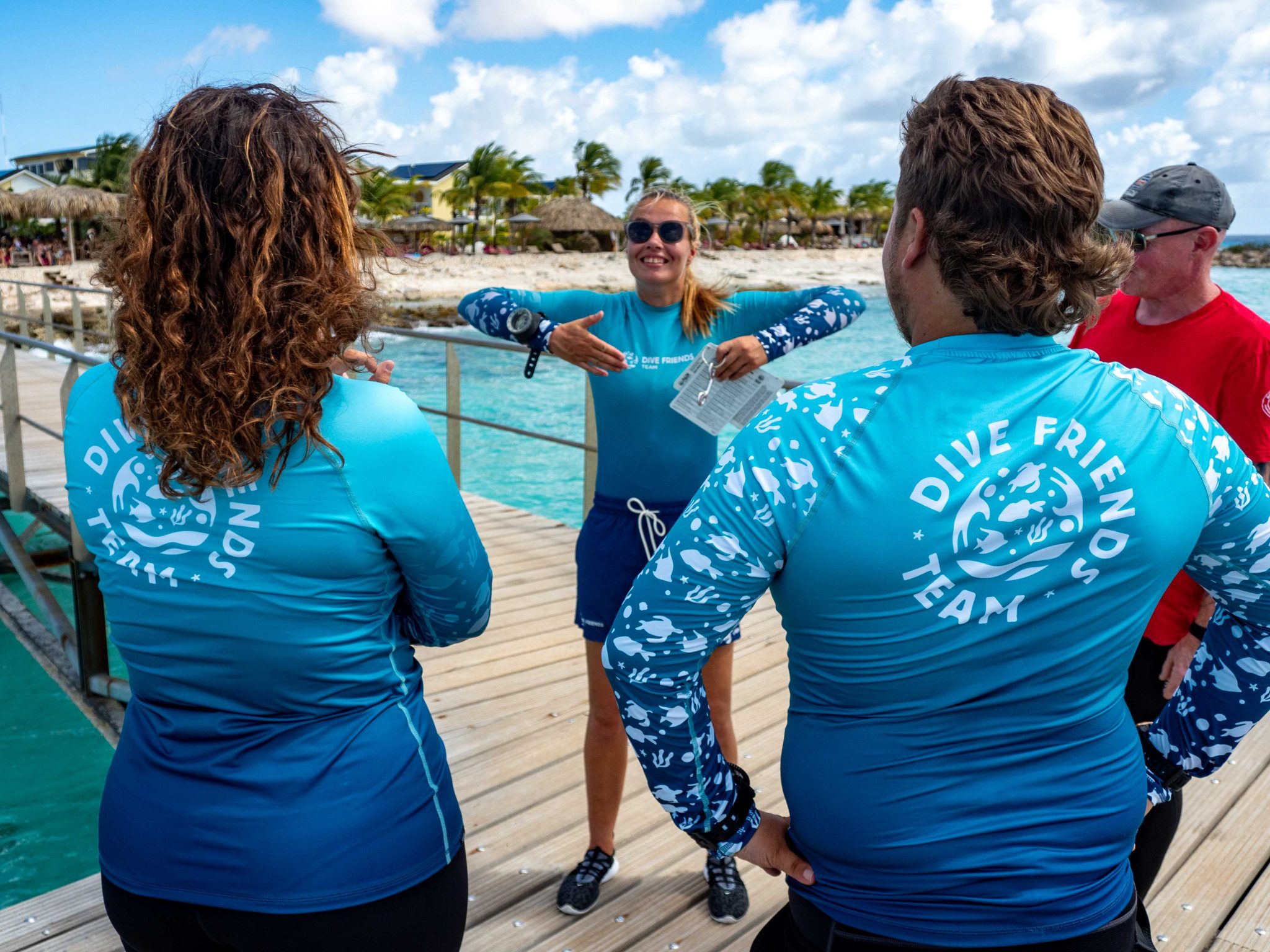
Dive Friends teaches the Instructor Development Course (IDC) several times a year to students who are eager to share their passion for diving with the world.
Dive Friends is known for the personal approach throughout the course. Their in-house course director will lead the students through every essential step, mentoring them to achieve their fullest potential as a dive instructor.
Applications for the following IDC start dates are now open:
- 12 April
- 5 July,
- 20 September
- 29 November
Partnership with Casita Palma
If the student opts for the IDC-Deluxe or IDC-Supreme package, their accommodation will be arranged for them at Casita Palma. This small and quiet resort is within walking distance from Dive Friends Bonaire’s main dive shop location and has everything you need to relax after an intense day of IDC training. Breakfast is included, so the student will always be fuelled and ready for their day.
Contact Dive Friends Bonaire’s Course Director Eddy for more information: coursedirector@divefriendsbonaire.com.
-

 News3 months ago
News3 months agoHone your underwater photography skills with Alphamarine Photography at Red Sea Diving Safari in March
-

 News3 months ago
News3 months agoCapturing Critters in Lembeh Underwater Photography Workshop 2024: Event Roundup
-

 Marine Life & Conservation Blogs3 months ago
Marine Life & Conservation Blogs3 months agoCreature Feature: Swell Sharks
-

 Blogs2 months ago
Blogs2 months agoMurex Resorts: Passport to Paradise!
-

 Blogs2 months ago
Blogs2 months agoDiver Discovering Whale Skeletons Beneath Ice Judged World’s Best Underwater Photograph
-

 Gear Reviews2 weeks ago
Gear Reviews2 weeks agoGEAR REVIEW – Revolutionising Diving Comfort: The Sharkskin T2 Chillproof Suit
-

 Marine Life & Conservation2 months ago
Marine Life & Conservation2 months agoSave the Manatee Club launches brand new webcams at Silver Springs State Park, Florida
-

 Gear Reviews3 months ago
Gear Reviews3 months agoGear Review: Oceanic+ Dive Housing for iPhone








